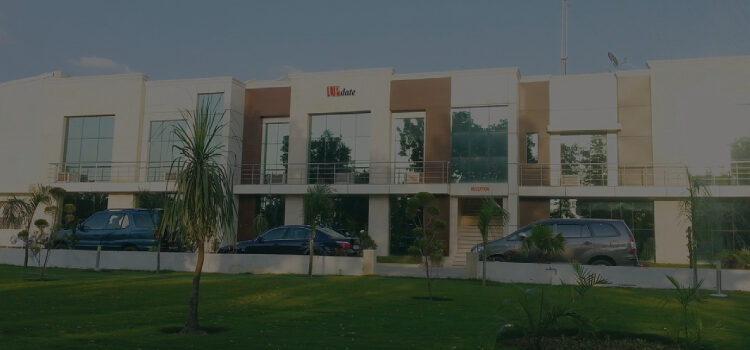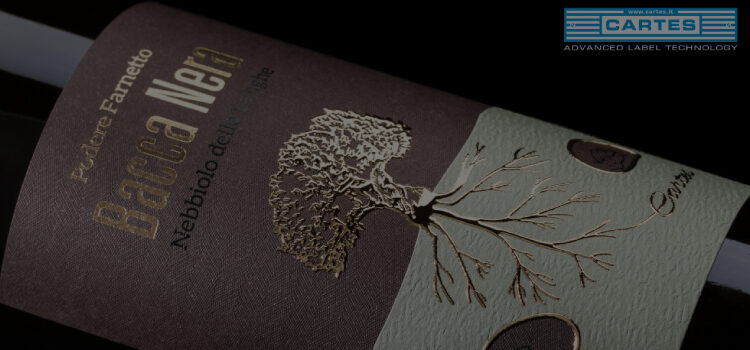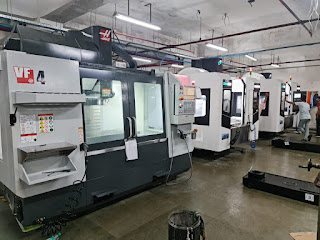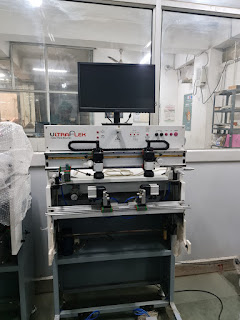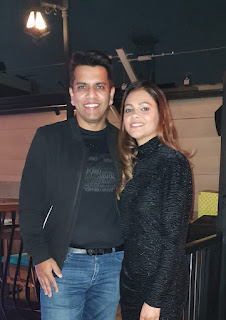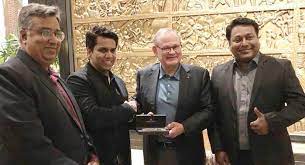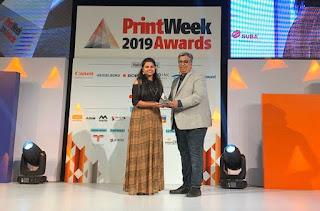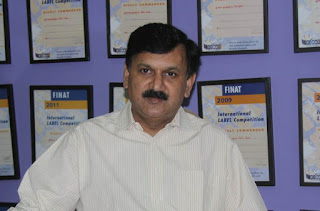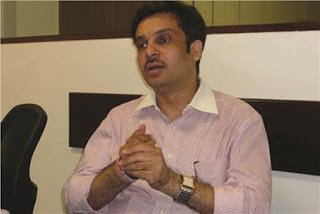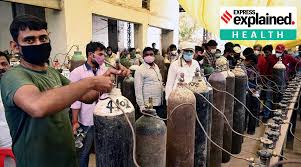The history of Rajesh Chadha, Managing Director of Update Prints Pvt. Ltd., which owes its inception and inheritance to P C Chadha & Co. started by his grandfather, is an interesting one. The first thoughts on letterpress, managing waste problems and family support were all highlights along the way that came on a journey from Kobe in Japan to New Delhi in India, following is the Indian Label converter’s history and thoughts for the future.
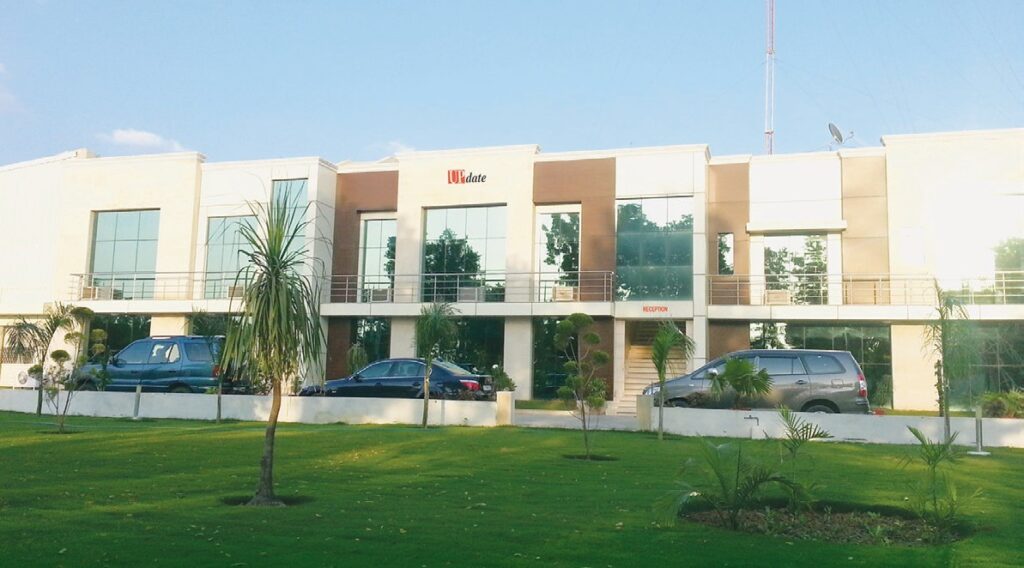
The very beginning
In the late 1970s and early 1980s driving on the western part of New Delhi’s Ring Road, many factories could be seen from far away. One such tall building was the factory of P C Chadha & Co. in the Naraina Industrial Area with a signboard on top visible from far. Around the mid-1980s when I was a commercial siliconiser selling release papers, I came to know that P C Chadha & Co. manufactured stickers and was a prospective customer. It was then a matter of time before I supplied some reams of release paper to them. During one of my visits to them, I spent two hours discussing why the stickers they were supplying were curling. I was quite naïve then but with time and experience, I have written on my blog a very widely read article on controlling curl. The young man I met was Rajesh Chadha, who was running P C Chadha & Co. and is the present Managing Director of Update Prints Pvt. Ltd. which owes its inception and inheritance to P C Chadha & Co. started by his grandfather.
Starting up
In 1924, young P C Chadha, living in Kobe, Japan, initiated an enterprise producing paper transfer labels with a vision that branding would be an important tool for sales of any consumer product, label being the face of any product. Sometime in the midst of turbulent times during World War II in 1942–43, P C Chadha decided to return to his homeland in Rawalpindi, then a part of undivided India and now in Pakistan. Little did he realize that in yet another five years he would have to move again! At the time of India’s partition in 1947 he came to Mumbai to set up his production for maintaining continuity in his passion for producing transfers, the labels of that time. Chadha soon came to recognise that the weather in Mumbai was not suitable for his product, and he moved operations to Pune. Before long he was still restless at the location and travelled up North in India to Patel Nagar in New Delhi where he set up his factory on a 150 square yards plot. He initially worked from home and later from his small factory.
As an entrepreneur’s son, the author had seen his father get advertisement boards hand painted by artists for advertising their stationery products. There was no alternative then. When one saw the transfer labels one used to wonder how they could achieve such exquisite printing direct on sewing machines, postal vans, crockery etc. Years later as the label industry was evolving into screen printing, I saw the same exquisite type of printing, which was different from screen printing, in my cousin’s factory making automotive filters. I realised they were using transfer labels like the ones P C Chadha & Co. produced. I was amazed to learn that the process employed by Chadha for printing was lithography. Based on the principle that oil and water do not mix, printing is done using stone blocks. In 1950 P C Chadha was joined in the business by his son Tilak Raj Chadha. They bought a used lithographic printing machine from England to expand their paper transfers business. Evolving further they later shifted to printing on cylinder type printing press using Zinc blocks mounted on wooden bases.

Major changes
Major changes started to happen when P C Chadha’s grandson Rajesh Chadha joined the business in 1976. The same year they moved factory from Patel Nagar to a 600 square yards plot in the nearby Naraina Industrial Area. With Rajesh at the helm, in 1978 he started to produce stickers by the manual screen-printing process. For the next ten years screen printing business became the mainstay for Chadhas. One of the first major decisions taken by Rajesh Chadha was to buy a European automatic Svecia Screen printing machine to print a full 20” x 30” sheet, quite big for that time. The 1990s was a very eventful decade for the Indian label industry. It was the time when many of today’s stalwarts in the Indian label industry became visible. For Rajesh Chadha also, it was time to shed the conventional image and adopt a modern look. It was during this period that the conventional sticker became an engineered label. Rajesh set up Update Prints in 1994 as his flagship venture thereon, gradually taking over all the business of P C Chadha & Co, which was eventually wound up later in 2009. Sensing the need to modernize with faster machines at Update Prints; he bought his first rotary flexo label press, a ”Focus“. There was no looking back after this.
Investments

In 2001 he bought an Orthotec intermittent letterpress at Labelexpo Asia held in Singapore. Two years later he impulsively bought a Rotatek label press displayed at a New Delhi print exhibition, on an immediate payment basis in full, taking his industry colleagues by surprise. Update Prints under his leadership has been acquiring new state-of-the-art equipment at regular intervals. From the single 600 square yards factory the company was soon operating from three different plots, one of 1000 square yards and two of 600 square yards. It was now time to consolidate for a few years. In another strategic move in 2013, Update Prints moved all their manufacturing operations under one roof to a facility admeasuring almost 25,000 square yards in land area and 50,000 square feet shop floor. This exercise required the involvement of a huge amount of money, time, effort and commitment. The land was designated agricultural land. Setting up an industrial project on it was illegal. Many people in the area have done it but Rajesh Chadha is committed to tread the straight path. He got the land use changed to industrial. Any Indian will know the kind of effort and time this takes. Infrastructure was another problem; the nearest power feeder was far away and to expedite the matter of bringing power to the unit, Update Prints had to install 50 electricity poles at their own expense. The approach road to the unit was in shambles, it had to be re-laid at their own expense. Update Prints now employs over 100 workforce and has a total of eight label presses.
Diverse technologies
Reminiscing about his work in the initial days in labels he says, ”The first label that I created was for Yardley Cosmetics“ he further adds that in those days he had bought two Newfoil three station hot-foiling presses. He used to love working with them creating innovative products. It was the most satisfying part for him because he could imagine and then create labels that would get appreciation from buyers. He has over the years equipped Update Prints with diverse technologies in label printing, decorating and finishing. Whether it is offset printed labels printed on his Rotatek Brava or labels created on flexo, letterpress, hot or cold foiling, screen printing, etc. his company is never left wanting for the ability to create. He is proud to say that “I deliver quality, service and satisfaction to my customers and for this reason work comes to me automatically. I do not have to waste time running after work.” While discussing digital printing I was not surprised that his reaction was similar to that of a larger part of the Indian label fraternity, ”It does not make sense to me at this point of time. I can print good quality short runs cost effectively on offset and letterpress“. A very interesting change that I noted in Rajesh during my talks with him is that he has started to encourage Indian entrepreneurs who have excelled. While most of his equipment is imported yet in recent times he saw the potential in an Indian manufacturer of label presses, Multitec. He was not hesitant and bought the equipment. In fact, he has followed it up by acquiring two more.
Family life
Rajesh Chadha being the elder son in his family, like in most migrant Punjabi families of that time in New Delhi, joined the business while he was still studying. He is an alumnus of New Delhi’s Salwan Public School and later studied commerce in Dayal Singh College for B.Com and finished with a master’s in commerce. His wife Anju is a master’s degree holder in English and takes an active interest in the business. Rajesh and Anju have two children who are both now married. Their daughter Upasna studied at the prestigious London School of Economics and spent time at Oxford University. Son Aditya, like his father, studied commerce from Delhi’s Shri Ram College of Commerce and later completed his MBA in marketing from ”Rutgers, The State University of New Jersey, USA“. Then after a one-and-a-half-year work experience in AT&T in the US, he returned to India to join his father at Update Prints as director. Rajesh fondly mentored him to take charge of this company.

Update Prints’ business has transformed over the years. They do very little transfer labels business now and largely produce self-adhesive labels. Their customers are mostly leading FMCG companies. Ten percent of their produce goes into export. While in Patel Nagar, waste management was a big problem for them. With the company growing continuously, disposal was becoming a gigantic issue. It was one of the reasons besides expansion that they moved to this present location some 35 Kilometers from Delhi. Here they have developed collectors who take the waste and convert it for various usages and applications. He strongly feels someone needs to work in the direction of managing or recycling this waste effectively and believes a solution will evolve. He also feels going linerless is also a good direction but like digital printing it will be some time before this technology becomes adaptable extensively.
Rajesh Chadha is satisfied about the time he has spent in the label industry, he says, ”It is an interesting industry. There is lot of work and room for creativity and innovation“. He is proud of his achievements. He has led the company to consistently achieve an almost 20% per annum growth rate, which is above the perceived industry rate. He is beaming when he says, ”Growth comes naturally to my company because of the quality of our work. It is not fueled by huge borrowings from banks“. No wonder he heads a fully family owned successful and growing zero debt company!
Written in May 2014 and updated in April 2024.

